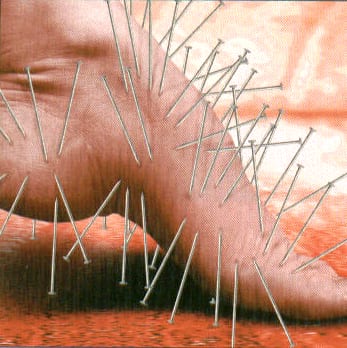Peripheral Neuropathy

There are several peripheral neuropathy treatment options for patients in the Greenville, Spartanburg & Anderson area. Peripheral neuropathy means the nerve endings in the hands or feet are not working properly. Patients often complains of numbness, tightness, hot or cold sensations, pain, and balance problems. Clinical presentations can include numbness, weakness, and burning pain. If the nerve endings in the feet are more severely involved there may be open or slow to heal skin sores. When the hands are involved difficulty performing normal tasks like holding objects, manipulating door keys, or being able to tell if tap water is hot can be a problem.
The most common form is peripheral neuropathy involves the small, sensory nerve fibers. The larger fibers are responsible for motor control. There are also very small nerve fibers, called the sympathetic nerves, which are responsible for burning pain and skin temperature regulation. Depending upon which nerve fibers are involved different symptoms occur. Hereditary diseases, hardening of the arteries, diabetes, chemotherapy, and heavy metals may all be responsible for peripheral neuropathy. Most often however doctors just can’t figure out why someone has neuropathy. Doctors call that form “Idiopathic” (no known cause).
The most common forms of peripheral neuropathy are due to vascular disease, diabetes, and chemotherapy. In these instances the small, sensory nerve fibers usually are the first to become involved. In early cases people often don’t even know they have a problem. Possibly they went to the doctor with low back pain only to find out during electrical nerve testing (EMG and nerve conduction testing) that there was a problem discovered in the sensory nerves in the feet.
More advanced nerve testing for the sympathetic nerves includes the use of thermal imaging or sympathetic skin response testing. In this test nothing touches the skin; infrared imaging is used to measure abnormalities in skin temperature regulation. Other diagnostic approaches include nerve density biopsy of the skin and Sweat Gland tests. Depending upon the results of nerve testing follow up studies of the vasculature or laboratory looking for other reasons for the neuropathy may be done as well.
Treatment depends upon the kind of neuropathy found but most commonly is directed toward restoring function (when the motor fibers are involved) or reducing pain. If the sensory nerves are severely involved then it is also very important to educate patients about skin care so that they don’t get an ulcer. These can be very hard to heal.
There are several medications that address neuropathy pain, however they all come with their own set of side effects and are only marginally successful in providing relief. Nerve blocks can be particularly helpful, especially when treatment of the nerves closer to the trunk or in the spine have an impact on symptoms. Laser therapy, when properly applied to involved skin surface areas, can actually reverse physical exam findings. In addition Platelet Rich Plasma (PRP) and Stem Cell injections have shown quite a bit of recent promise.
While we are not quite certain why these injections (or grafts) work we do know that when properly placed they can cause new blood vessel growth in the extremities. That of course can lead to both pain reduction and regeneration. This is an exciting and promising treatment option. If you have peripheral neuropathy it is a good idea to explore your options and find a doctor with specialized expertise in its diagnosis and treatment.
Peripheral Neuropathy: Sympathetic Fibers
Peripheral Neuropathy Treatment
Neuropathy and PAD brochure (PDF)
The Realief Peripheral Neuropathy Program of Care





